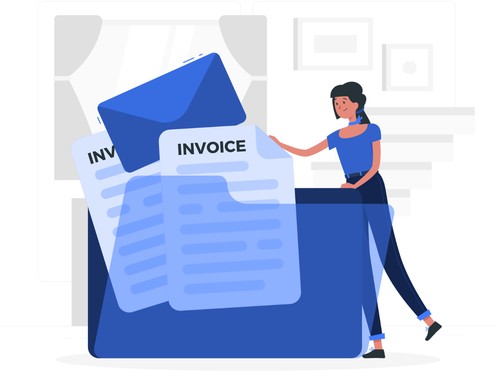In the realm of business, invoices are essential documents that speed the smooth operation of financial undertakings between trades and clients. An invoice is a detailed record of a transaction that outlines the ability or services determined, the costs involved, and payment agreements.
Businesses use various types of invoices for various purposes based on their particular needs and requirements. They can also use the best accounting software for small business. In this article, we will survey the different types of invoices usually used in trade transactions.
Standard Invoice
The standard invoice, also known as a regular itemized bill, is the lowest type of invoice used in trade transactions. It contains essential details such as the name and contact news of the seller and patron, a description of the ability or services provided, load, price per unit, total obligation, and payment conditions.
Standard invoices are used for one-time undertakings or regular businesses where the fee is expected within a particular time frame.
Recurring Invoice
For trades that provide aid on an ongoing basis, persisting invoices are a convenient habit to bill clients regularly. These invoices are usually used for consent-based duties, memberships, or ongoing maintenance contracts.
Recurring invoices mechanize the billing process and may be set up to create invoices at specified intervals, to a degree monthly or occurring. This type of invoice helps trades maintain a steady available funds and ensures prompt payments from clients.
Proforma Invoice
A proforma invoice is a preliminary bill of sale given to the buyer before the real delivery of goods or aids. It outlines the estimated costs of the undertaking, including the writing of the products or services, quantities, prices, and agreements of sale. For this, you can use a perfect invoicing software.
Credit Memo
In cases where adaptations need to be fashioned to a previously circulated invoice, a credit memo is used to document the changes. A credit note indicates that a credit is being circulated to the buyer for restored goods, discounts, or overpayments.
It includes analyses such as the original invoice number, the reason for issuing the credit, the amount believed, and the new balance owed. Credit memos help to claim accurate bookkeeping records and ensure that both bodies are aware of some adjustments created to the original transaction.
Debit Memo
Conversely, a debit note is used to notify the shopper of additional charges or adaptations to an existing invoice. Debit notes are issued when skilled are undercharges, late fees, or punishments that need to be applied to the consumer’s account.
The note includes information in the way that the original invoice number, the reason for the supplementary charges, the amount debited, and the new total amount unpaid. Debit memos help businesses amend billing wrongs and ensure that all undertakings are accurately reflected in the bookkeeping records.
Conclusion
Invoices play a crucial part in the financial movements of businesses by documenting undertakings, ensuring timely payments, and maintaining correct records. Understanding the different types of invoices handy allows trades to choose the most appropriate charge money for goods method for their particular needs.
Whether it’s a standard invoice for previous sales, recurring invoices for continuous services, proforma invoices for worldwide transactions, or credit and entry memos for adjustments, each type of invoice serves a unique purpose in easing smooth and transparent commercial transactions.












